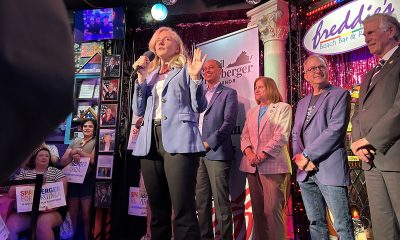Living
Orange wins race for at-large Council seat
Mara, Weaver capture ‘gay’ precincts
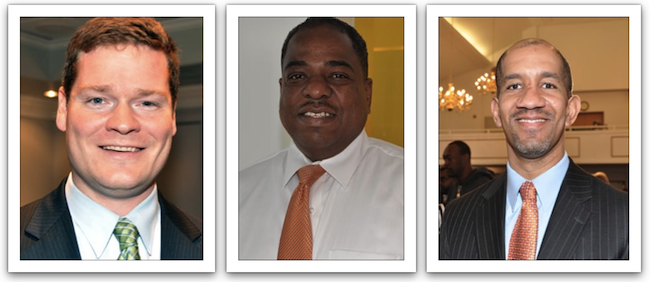
Democrat Vincent Orange won the race for an at-large D.C. Council seat in the city’s special election on Tuesday, defeating eight rivals, including interim Democratic Council member Sekou Biddle, who received the backing of most LGBT leaders.
In a development that suggests rank-and-file LGBT voters may have rejected the advice of gay leaders, Biddle lost by lopsided margins to pro-gay Republican Patrick Mara in seven of the city’s 14 precincts identified as having high concentrations of LGBT residents.
Pro-gay Democratic candidate Bryan Weaver trounced Biddle in another five of those precincts in neighborhoods in Ward 1, which is Weaver’s home base. Orange won in the remaining two precincts — in Anacostia and the Southwest Waterfront — which are believed to have a significant number of black LGBT residents.
Gay activist Bob Summersgill, a former president of the Gay & Lesbian Activists Alliance, said the small voter turnout in the election of slightly more than 12 percent of the city’s registered voters makes it difficult to draw conclusions about the LGBT vote.
“With a dismally low turnout, I don’t think there was a gay bloc of voters,” he said. “Most of the candidates were lackluster on our issues and were closely grouped in the mediocre range.”
Summersgill was referring to GLAA’s ratings of the candidates.
Robert Turner, president of Log Cabin Republicans of D.C., which endorsed Mara, disagreed with Summersgill’s assessment. He said Mara’s strong showing in precincts with high concentrations of LGBT residents show that they are not permanently tied to Democratic candidates.
“When presented with a viable alternative, our community is not monolithic,” he said.
Final but unofficial returns released Tuesday night by the D.C. Board of Elections and Ethics show Orange receiving 28 percent of the vote. Mara came in second with 26 percent. Biddle came in third with 20 percent, with Weaver coming in fourth place with 13 percent.
Democrat Joshua Lopez, who also expressed strong support on LGBT issues, received 7 percent. The remaining four candidates — Democrats Tom Brown and Dorothy Douglas; Statehood Green Party candidate Alan Page; and independent Arkan Haile — received a combined total of less than 5 percent.
Orange, who came out against same-sex marriage when he ran for mayor in 2006, reversed his position on the issue last year, saying he now supports the city’s marriage equality law. He pointed to what he called his strong pro-LGBT record during his tenure as a Ward 5 Council member from 1997 to 2007 on LGBT issues other than marriage equality.
In the weeks leading up to the election, Orange campaigned in many of the city’s gay bars. He received applause when he spoke earlier this month to a crowd attending a drag show at the Southwest gay nightclub Ziegfeld’s. Last week he hosted a meet-and-greet reception at the gay sports bar Nellie’s on U Street, N.W.
A number of LGBT activists backed his candidacy, including veteran gay Democratic and Ward 8 civic activist Phil Pannell, who was trailing in his own race on Tuesday for a Ward 8 school board seat.
Biddle received the endorsement of the Gertrude Stein Democratic Club, the city’s largest LGBT political group, and was backed by most of the city’s prominent LGBT activist leaders. He spoke out in support of LGBT-related issues in the city’s public schools during his tenure as a Ward 4 school board member.
He also received endorsements from Mayor Vincent Gray, Council Chair Kwame Brown, and seven other Council members, including gay Council member David Catania (I-At-Large).
Some political observers said Biddle, who had the reputation of a good-government reformist and progressive candidate, suffered when Gray and Brown came under scrutiny over allegations of cronyism and abuse of government perks.
Gray became embroiled over allegations that a few of his high-level appointees hired family members to high-paying city jobs and that one of his top officials hired a former mayoral candidate to a high paying city job as a quid pro quo for helping Gray in the mayoral race.
Brown came under criticism for arranging for the city to purchase two “fully loaded” Lincoln SUVs for his use as Council chair. He later announced he would seek to return the vehicles after expressions of outrage poured in from constituents and media commentators.
With that as a backdrop, many voters – both gay and straight – may have perceived Biddle as the candidate of the entrenched political establishment at a time when city residents were becoming impatient with “business as usual” by city government leaders, according to City Hall observers.
In January, the D.C. Democratic State Committee voted to appoint Biddle as the interim at-large Council member to temporarily hold the seat vacated by Democrat Kwame Brown, who won election last November as Council chair.
Lateefah Williams, president of the Stein Club, said she doesn’t believe “rank and file” LGBT voters rejected the recommendations of the LGBT activist leaders who backed Biddle.
“The turnout in this election was too low to use it as a barometer to assess the impact of the endorsement of LGBT activists, including the Stein Club,” she said. “In the last Democratic primary, which for D.C.’s purposes is the election, eight of the nine Stein-endorsed candidates prevailed. So that indicates that the unique circumstances surrounding this race had a huge impact on the results.”
Like other activists commenting on Tuesday’s election, Williams said Biddle most likely was “a casualty of the prevailing sentiment against many of our locally elected officials.”
Biddle, Orange, Weaver and Mara each spoke out in support of LGBT and AIDS-related issues during the campaign. So did most of the other five candidates in the race; no one spoke against LGBT rights.
Similar to the city’s Democratic primary election last year in which Gray defeated former Mayor Adrian Fenty, voters in Tuesday’s special D.C. Council election appear to have divided along racial lines.
Mara, who is white, won by a significant margin in the majority white Wards 2, 3 and 6. Weaver, who is also white, won by a large margin in Ward 1, in which whites have a slight majority.
Orange, who is black, won by lopsided margins in majority black Wards 4, 5, 7, and 8.
All but one of the LGBT-oriented precincts are in majority white Wards 1, 2 and 6. Activists familiar with demographic trends in the city’s LGBT community point out that black LGBT residents tend to be dispersed throughout the city as well as within the majority black wards, making it difficult to accurately determine how they vote.
Precinct 112 in Anacostia is believed to have a high concentration of black gays living in various high-rise apartment buildings. Precinct 127, located in the Southwest Waterfront neighborhood, is believed to have a significant number of black LGBT professionals, many of whom reportedly work in nearby federal government offices.
Orange won Precinct 112 with 58 percent of the vote, with Biddle coming in second with just 17 percent. Mara received 4 percent and Weaver received 2 percent.
The vote breakdown in Precinct 127 was closer, with Orange winning with 31 percent and Biddle finishing second with 27 percent. Mara finished third in the precinct with 21 percent and Weaver received 10 percent.
Following is the vote breakdown of the leading four candidates in the race in other precincts with high concentrations of LGBT residents. Percentages are rounded:
• Precinct 14 (Dupont Circle): Mara, 50 percent; Weaver, 21 percent; Biddle, 18 percent; Orange, 4 percent.
• Precinct 15 (Dupont Circle): Mara, 39 percent; Weaver 25 percent; 21 percent; Orange, 5 percent.
• Precinct 16 (Logan Circle): Mara, 46 percent; Weaver 18 percent; Biddle, 14 percent; Orange, 8 percent.
• Precinct 17 (Logan Circle): Mara, 41 percent; Biddle, 19 percent; Weaver, 18 percent; Orange, 13 percent.
• Precinct 18 (Shaw): Mara, 25 percent (94 votes); Orange, 25 percent (91 votes); Weaver, 23 percent; Biddle, 16 percent.
• Precinct 22 (14th and U Street, N.W. corridor): Weaver, 33 percent; Mara, 32 percent; Biddle, 19 percent; Orange, 10 percent.
• Precinct 23 (U Street-Columbia Heights): Weaver, 35 percent; Mara, 20 percent; Biddle, 15 percent; Orange, 12 percent.
• Precinct 24 (Adams Morgan): Weaver, 43 percent; Mara, 21 percent; Biddle, 17 percent; Orange, 11 percent.
• Precinct 25 (Adams Morgan): Weaver, 41 percent; Mara, 33 percent; Biddle, 15 percent; Orange, 4 percent.
• Precinct 36 (Columbia Heights): Weaver, 36 percent; Mara, 18 percent (69 votes); Orange, 18 percent (69 votes); Biddle, 14 percent.
• Precinct 89 (Capitol Hill): Mara, 55 percent; Biddle, 16 percent (104 votes); Weaver, 16 percent, 103 votes); Lopez, 7 percent; Orange, 4 percent.
• Precinct 90 (Capitol Hill): Mara, 45 percent; Lopez, 18 percent (55 votes); Weaver, 18 percent (53 votes); Biddle, 14 percent; Orange, 5 percent.

Did you melt like the Wicked Witch of the West this week?
As summer temperatures rise, keeping your home or apartment cool during a heat wave can become both a comfort issue and a financial challenge. One of the most effective ways to keep a home cool is to prevent heat from entering in the first place. Sunlight streaming through windows can significantly raise indoor temperatures. Consider the following solutions:
• Close blinds or curtains during the hottest parts of the day. Blackout curtains or thermal drapes can reduce heat gain by up to 30%.
• Install reflective window films to block UV rays and reduce solar heat without sacrificing natural light.
• Use outdoor shading solutions such as awnings (yes, the ones you removed because they were “dated”) and shutters to limit direct sunlight.
Fans are a cost-effective way to circulate air and create a wind-chill effect that makes rooms feel cooler.
• Ceiling fans should rotate counterclockwise in the summer to push cool air down.
• Box fans or oscillating fans can be placed near windows to pull in cooler evening air or push hot air out.
• Create a cross-breeze by opening windows on opposite sides of your home and positioning fans to direct airflow through the space.
• For an extra cooling effect, place a bowl of ice or a frozen water bottle in front of a fan to circulate chilled air.
To optimize natural ventilation, open windows early in the morning or late in the evening when outdoor temperatures drop. This allows cooler air to flow in and helps ventilate heat that built up during the day.
Appliances and electronics generate a surprising amount of heat. To reduce indoor temperatures:
• Avoid using the oven or stove during the day; opt for no-cook meals, microwave cooking, or grilling outside.
• Run heat-producing appliances like dishwashers and clothes dryers in the early morning or late evening.
• Unplug electronics when not in use, as even standby power can add heat to your space.
• Switching to energy-efficient LED lightbulbs can also reduce ambient heat compared to incandescent lighting.
If you do use an air conditioner, maximize its effectiveness by:
• Setting it to a reasonable temperature—around 76–78°F when you’re home and higher when you’re away.
• Cleaning or replacing filters regularly to maintain airflow and efficiency.
• Sealing gaps around doors and windows to prevent cool air from escaping. (Didn’t we all have a parent who said, “Close the door. You’re letting all the cool out?”)
• Using a programmable thermostat to optimize cooling schedules and reduce energy use.
If it is not cost-prohibitive, adding insulation in attics and walls can greatly reduce heat transfer. Solar panels that reflect heat can also help, as well as offset the cost of their installation. Adding weatherstripping around doors and windows, sealing cracks, and using door sweeps can make a significant difference in keeping heat out and cool air in.
Natural and eco-conscious methods can also help cool your home.
• Snake plants, ferns, or rubber trees can improve air quality and slightly cool the air through transpiration.
• White or reflective roof paint can reduce roof temperatures significantly.
• Cooling mats or bedding can make sleeping more comfortable without cranking up the A/C.
For renters or those who can’t make permanent modifications, there are still plenty of ways to keep cool.
• Use portable fans and A/C units instead of built-in systems, making sure they are the correct size for your space.
• Removable window film or static cling tinting can reflect heat without violating your lease.
• Install tension rod curtains or temporary blackout panels instead of hardware-mounted window coverings.
• Add draft blockers and weatherstripping tape that can be applied and removed without damage.
• Cover floors with light-colored rugs to reflect heat rather than absorb it.
• If allowed, use temporary adhesive hooks to hang reflective materials or light-filtering fabrics over windows.
Even if your space is warm, you can still take steps to help your body stay cool.
• Wear light, breathable fabrics like cotton or linen.
• Stay hydrated and avoid caffeine or alcohol during peak heat hours.
• Take cool showers or use damp cloths on your neck and wrists to bring your body temperature down.
Keeping your home or apartment cool in the summer doesn’t have to be expensive or energy-intensive. With a few adjustments such as blocking sunlight, optimizing airflow, using fans effectively, and making renter-friendly upgrades, you can create a more comfortable indoor environment while keeping energy bills in check.
Valerie M. Blake is a licensed Associate Broker in D.C., Maryland, and Virginia with RLAH @properties. Call or text her at 202-246-8602, email her at DCHomeQuest.com, or follow her on Facebook at TheRealst8ofAffairs.
Real Estate
The world’s on fire and D.C. is on sale (sort of)
Prices are up, but then again, nothing makes sense anymore

ICE is disappearing people, revered government agencies are shuttering, and who knows if we’ll be in World War III next week? But can you believe prices in D.C. are actually still up 6.3% since last year? It doesn’t make sense, and perhaps that does make sense, because nothing seems to make any sense any more.
That said, there are some parts of our market that are truly suffering. The interest rates, which have been up, up, up for about four years now, are the ongoing rain on our market’s military parade. Combine that with 75,000 federal employees taking a buyout nationwide, and DOGE cuts eliminating around 40,000 federal jobs in the District (per estimates by the D.C. CFO), not to mention thousands of other job losses in non-governmental organizations due to funding and program cuts, and you’ve got a case of uncertainty, and downright unaffordability in the pool of otherwise would-be buyers.
This has had a marked impact on properties that starter-home buyers and low- to mid-level employees would otherwise buy, most notably condominium and cooperative apartment units. These properties have already slowed in our market thanks to the profound impact that higher interest rates have had on their monthly carrying costs—pair that with job insecurity, and a lot of condos are proving to be very difficult to sell indeed.
So how is the average sale price up in our market?
The increase is almost entirely due to the resounding strength of the single-family home market, especially in upper Northwest D.C., where it is still quite common to see bidding wars, even on properties pushing past the $3M mark. It seems that buyers in that echelon are less impacted by a few percentage points in the interest rate, and less concerned about their job security. Notably, those buyers are often married with children and have an absolute need for more space, must stay in the area due to one spouse’s job, or the kid’s friend group, regardless of whether the cost of owning is thousands of dollars more per month than it would have been in 2020 or 2021. The continued appreciation in these neighborhoods defies imagination.
So, what to do if you are not one of those lucky enough to be shopping for a $3M home? The short answer: wait. If you want more space, rent your current place out and learn the joys of being a landlord while someone else pays your mortgage. Need the equity from your current home to buy your next place? Get a home equity line of credit, or loan, and pull the equity out of your current place to buy the next one. Or—and I have never recommended this before in 21 years of being a Realtor—rent for a few years. Sure, I’d love to list and sell your condo so you can climb the real estate ladder, but it might just be a waste of time, money or both if you could just ride out this storm and sell in a DOGE-less future.
All this said, there are some condos that seem to be immune from this recent negative news. Anecdotally, it feels like it’s the truly special ones that do just fine no matter the market. Our recent listing in Capitol Hill had a view from every one of its 15 windows of the Supreme Court. Sold in five days with six offers. Another condo was on the top two floors of a townhouse and had the coolest black wood floors that gleamed like a grand piano. Sold in four days at full price.
So, all is not for naught if you have a condo or home in an area that people want to be in, with nice space, light, amenities and a certain je ne sais quois. And, as long as we have a democracy in a few years, my experience says our market will be back, stronger than ever, really soon.
David Bediz is a Realtor and mortgage loan broker for the Bediz Group LLC and Home Starts Here, LLC. Reach him at [email protected].
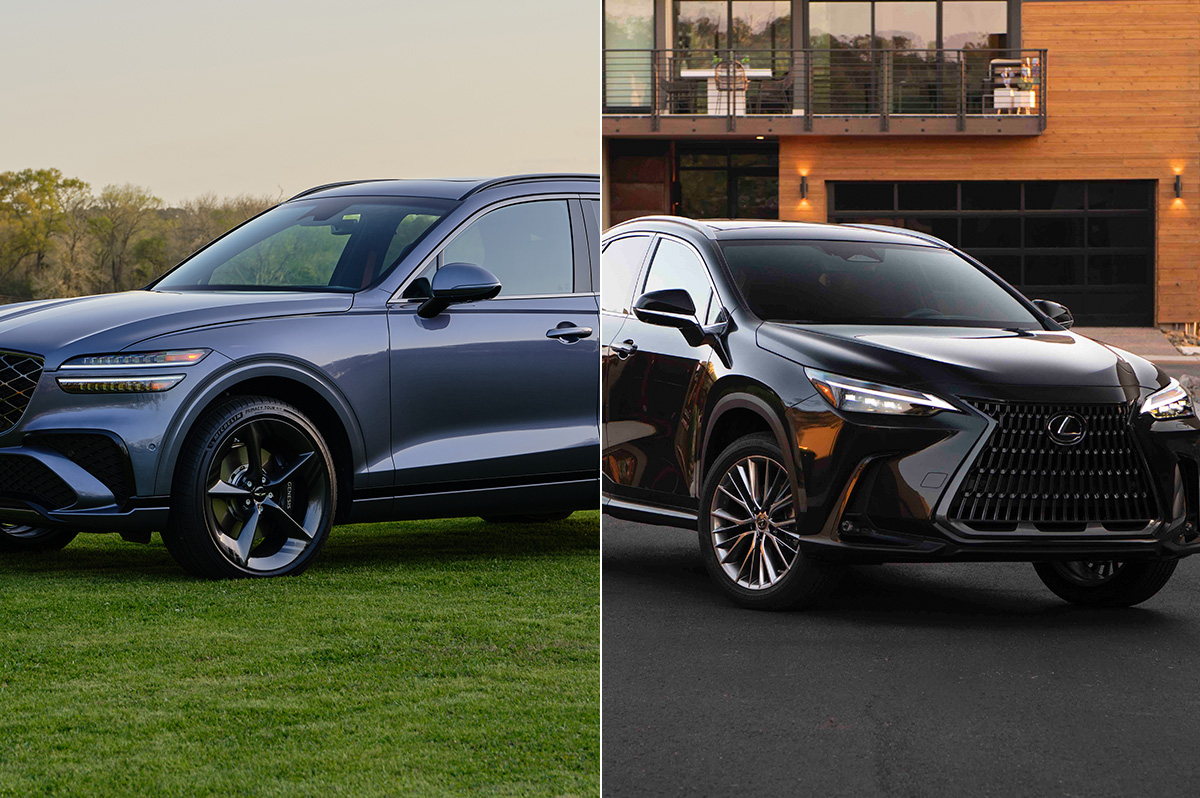
In this corner, there’s the Genesis QV70, newly updated and full of glitzy gizmos. And in the opposing corner, there’s the Lexus NX, a fan fave known for comfort and reliability.
Both are strong contenders. Both have proven to be equally adept at bobbing and weaving through traffic. And both can go toe to toe with pricier competitors.
And yet, what would happen when they sparred against each other? Here’s your ringside seat to find out.
GENESIS QV70
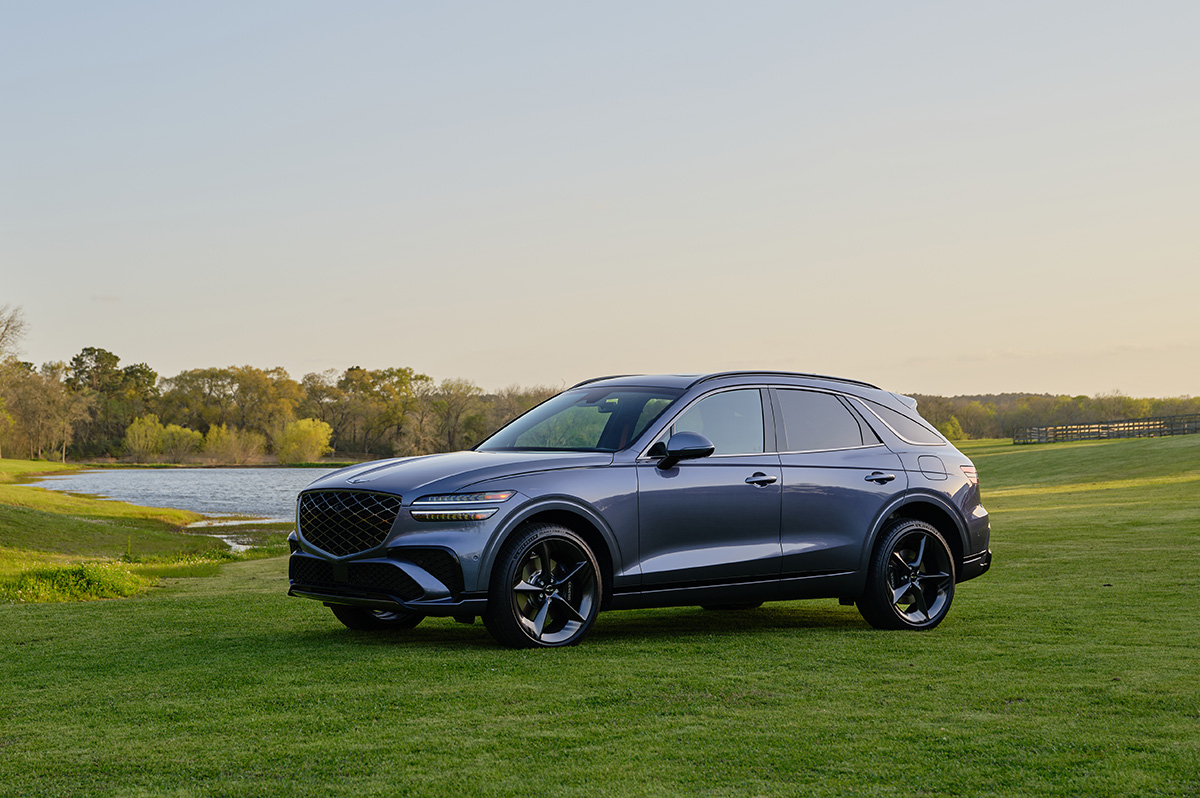
$50,000
MPG: 22 city/28 highway
0 to 60 mph: 5.9 seconds
Cargo space: 28.9 cu. ft.
PROS: Stylish. Good value. Lots of standard amenities.
CONS: So-so fuel economy. Quirky dash controls.
IN A NUTSHELL: When it comes to speed, the Genesis QV70 is faster on its feet than the Lexus NX. Neither of these crossover SUVs is a lightweight, but the QV70 offers more potent powerplants—including an all-electric version that zips from 0 to 60 mph in just 3.8 seconds. In other words, Porsche Macan S territory.
The two gas-powered options—a four-cylinder turbo and twin-turbo V6—also got my blood pumping. So did the velvetlike suspension mixed with deft handling and stop-on-a-dime braking. But this adrenaline rush comes at a cost: sacrificing fuel economy.
As for the automaker’s design philosophy—“athletic elegance”—it’s on full display here: an oversized grille inspired by the Genesis emblem, the dramatically arcing silhouette, and those distinct quad headlights and taillights. It’s not easy to stand out when 25% of all vehicles sold in the U.S. are compact crossovers, so kudos to the QV70 for being such a head-turner.
The mod-yet-minimalist styling carries over to the cabin, with its high-quality materials: real-wood accents, soft-touch plastics and a tasteful glass shift knob. New this year is a sweeping 27-inch dashboard monitor, which houses the gauge cluster and infotainment touchscreen. Alas, this display is positioned a bit far from the driver (though I must admit reaching for it did help stretch a few tight back muscles).
Instead of being a costly extra, this gigantic monitor comes standard. So do synthetic leathers seats, nine-speaker stereo, smartphone/wireless connectivity, hands-free liftgate, tons of safety gear and more. Options include a panoramic sunroof, three-zone climate control, 16-speaker Bang & Olufsen audio, synthetic suede headliner, sound-reducing rear windows, automated parking and other goodies.
What’s the score so far? Despite some minor quibbles, the Genesis QV70 is a worthy challenger that pulls no punches.
LEXUS NX
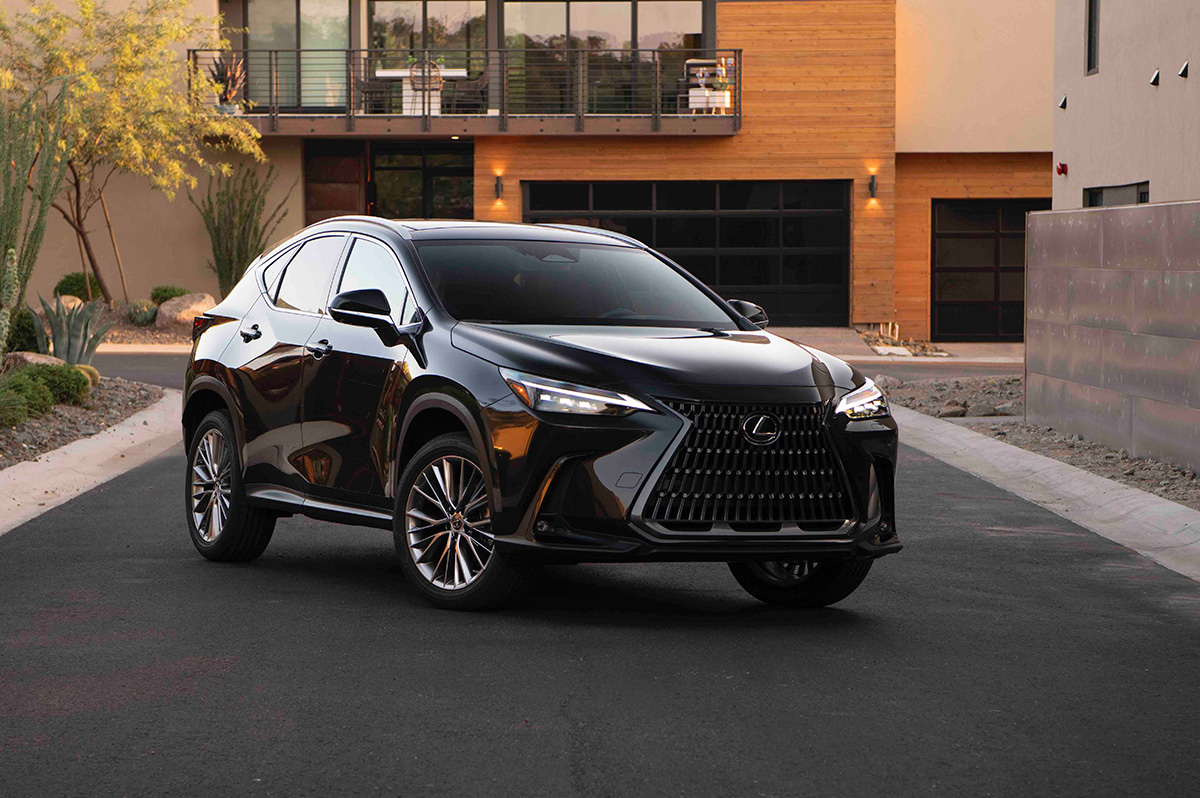
$43,000
MPG: 26 city/33 highway
0 to 60 mph: 8.2 seconds
Cargo space: 22.7 cu. ft.
PROS: Fuel efficient. Comfy seats. Rock-solid reliability.
CONS: Pokey base model. Limited rear storage.
IN A NUTSHELL: Sure, the Lexus NX isn’t as speedy as the Genesis QV70. But, as with the tortoise and the hare, sometimes slow and steady wins the race. And really, it’s only the entry-level NX that feels sluggish, such as when trying to quickly merge into freeway traffic.
Other trim levels, including two hybrid options, are just fine. And no matter the engine choice, the counterpunch here is that these vehicles get better gas mileage: 20% higher fuel economy than in either the four-cylinder or V6 in the Genesis. The two NX hybrids are even more green, with the high-end plug-in version able to travel up to 37 miles on electric power alone. One downside: There is no all-electric NX—well, at least not yet.
As with parent-company Toyota, Lexus offers stellar vehicle reliability—often ranked No. 1 in dependability and crash-test surveys year after year. Lexus vehicles generally hold their value better than Genesis, because this newer brand has a shorter history. Lexus also has a larger dealer network, though the number of Genesis dealerships is growing.
But when it comes to cargo space, the NX is about two inches shorter and narrower than the QV70, which has more stowage area. And Genesis handling is sportier, though the Lexus feels sure and well-grounded.
Luxe interior amenities are basically the same in both vehicles. But interior styling in the QV70 is trendy, while the NX is more understated. In other words, a choice between sassy and classy.
This is a very competitive vehicle segment, with Euro models like the Audi Q5, BMW X3 and Mercedes GLC also duking it out in what seems like a clash of the titans.
But as for the Genesis QX70 or Lexus NX, which is the winner? For me, both are real knockouts—so I’d call it a draw.
-

 U.S. Supreme Court3 days ago
U.S. Supreme Court3 days agoSupreme Court upholds ACA rule that makes PrEP, other preventative care free
-

 U.S. Supreme Court3 days ago
U.S. Supreme Court3 days agoSupreme Court rules parents must have option to opt children out of LGBTQ-specific lessons
-

 National5 days ago
National5 days agoEvan Wolfson on the 10-year legacy of marriage equality
-

 Congress4 days ago
Congress4 days agoSenate parliamentarian orders removal of gender-affirming care ban from GOP reconciliation bill


